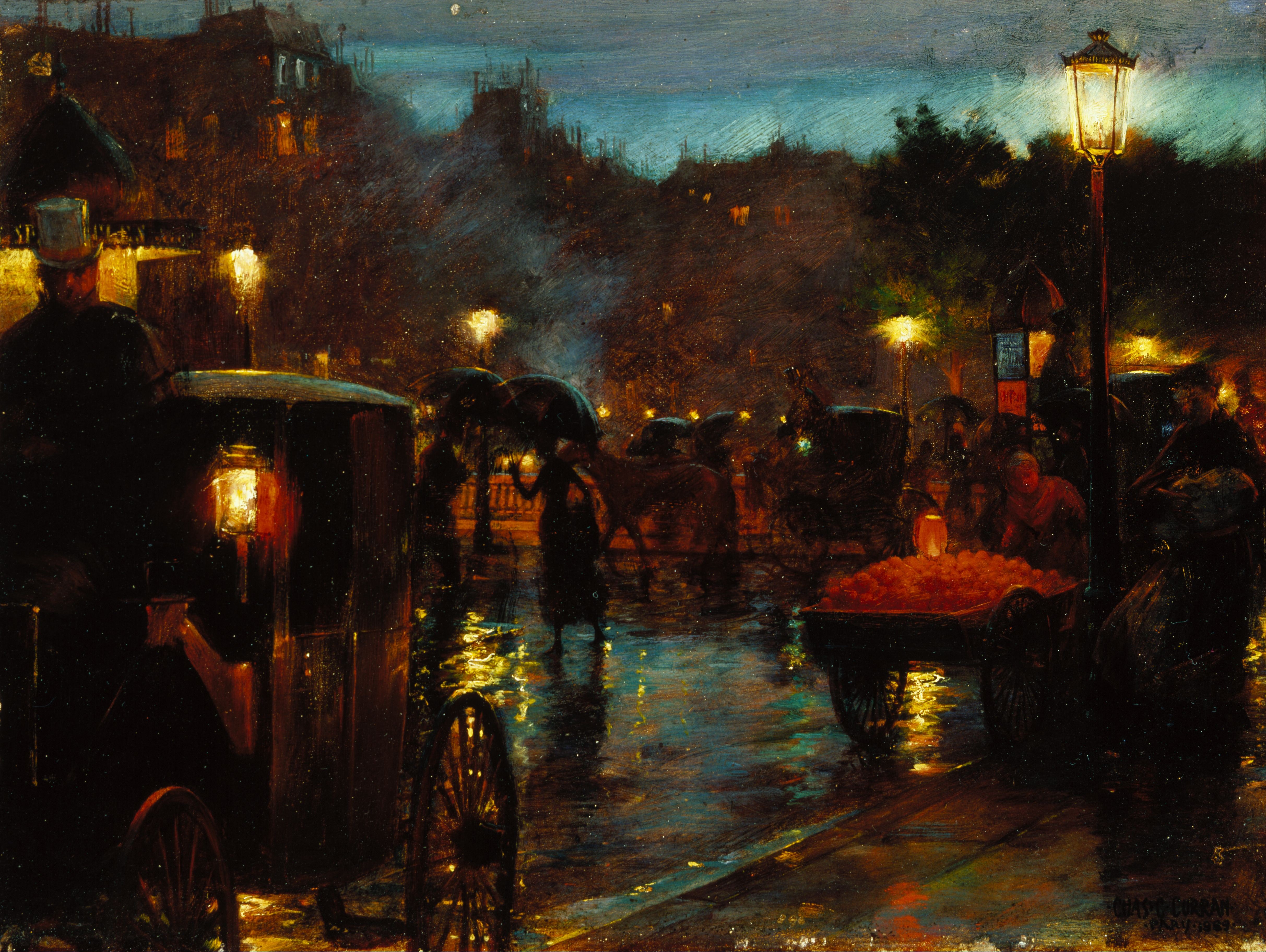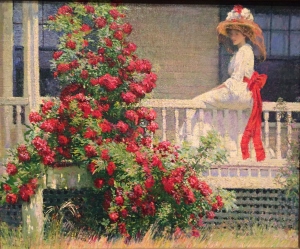After a pleasant visit with family at The Met, including a decadent stop in the member’s dining room, I stopped in for a lecture on the French Baroque artist Valentin. Imagine my pleasure in discovering one of the speakers was a favorite professor from the University of Delaware, David Stone. A Caravaggio scholar, he was examining the career of this French follower of the big C and looking for references and quotations.
They are all over the place, and I enjoyed having David open my eyes once again. He pointed out the freshness of vision of Valentin, which had been easy for me to miss.
Visiting the exhibit afterward, where did I linger? Over the witty paintings of deception borrowed from Caravaggio’s The Card Sharps.

Caravaggio. The Card Sharps. c1595.

Valentin. Cardsharps. c1615.
Note that being lost in the love and beauty of your own music could get your pocket picked. To me, this reads as a metaphorical lesson to look outside oneself.
Music seems to play a role in the deceptions throughout the gallery. It was also dotted with the instruments depicted in the paintings, some unusual to my eye.
Perhaps my favorite work is the fortune teller who doesn’t see the present well enough to know she was being robbed. What Valentin did was riff on the same subject Caravaggio introduced in clever ways.

Valentin. Fortune-Teller. c1626-8.
The exhibit is dark, lush, and romantic like the paintings. So the bright lightness of the Jean Honore Fragonard drawings and prints exhibit was just right for the cotton-candy Rococo that followed the Baroque. I was still in France but now celebrating the frivolity of love and romps in the park.

Jean Honoré Fragonard. The Island of Love. c1770-80.
The drawings and prints are delicate and frothy like his paintings. A joy to behold.

Jean Honoré Fragonard. Draftsman in a Trellised Garden. c1770-2.
Over in the Breuer Building, which The Met inherited from the Whitney, is the joyous look at lobe by Kerry James Marshall. The exhibit is filled with his giant genre paintings of everyday black life, and in the 2000s, he began focusing on love, directly inspired by Fragonard. Edging away from identity politics, he painted masterpiece-inspired scenes of ordinary romance. Normalizing black love was his goal and challenge to a white audience.
I loved so much of this exhibit by the Chicago artist. I felt uplifted by it in this time of racial anger.
Enjoy the sensual love of Slow Dance.

Kerry James Marshall. Slow Dance. 1992-3.
The delights of two versions of the Fragonard-quoting Wishing Well.

Kerry James Marshall. Wishing Well. 2012.
Can you tell he uses glitter? Love that!

Kerry James Marshall. Wishing Well. 2012.
And the complexities of School of Beauty, School of Culture. Like Velazquez’s Las Meninas, Marshall puts himself in the scene, obscured by a camera flash rather than a giant canvas.
Directly referencing the English Renaissance artist Hans Holbein, he uses the same visual anamorphic trick. When walking from side to side, the image will come into focus and clarity. But instead of a skull reminding us of our mortality, he uses a white beauty icon as a reminder of how dominant white culture ideals distort the black experience of beauty.
The anamorphic trick doesn’t quite work; the blonde would appeal undistorted if it did.
But no matter. There’s so much to love and investigate. Note the toddler peeking around at the cartoonish white face, trying to make sense of its strangeness here.
The enormous painting creates an entire world to step into, and its wonderfully inviting!
As a delicious coda, Fragonard’s 17-year-old sister-in-law Marguerite Gérard (who goes on to a notable art career) copied Fragonard’s drawings as he instructed her in printmaking. She made this rather hilarious (to our contemporary eyes) print featuring Ben Franklin.
Yes, that’s Franklin at center. His face is so unmistakable that the print literally stopped my slow stroll through this French art gallery. What is this? I wondered. Please let me decipher it for you.
Ben is being protected by Minerva and her shield overhead, as he instructs Mars, god of war, to slay the enemies of America! You can’t leave her out of any allegorical scene of the brand new nation. There’s America in her truncated feather headdress, leaning on Franklin’s knee.
If you ever doubted Franklin’s celebrity in Paris, here’s your most exquisite proof!

Marguerite Gérard. The Genius of Franklin. 1778.




















































 We first met in the art history building where refreshments were in a room that resembled a little, red schoolhouse, only really the little, red-chair school room.
We first met in the art history building where refreshments were in a room that resembled a little, red schoolhouse, only really the little, red-chair school room.








 It sparkles with metallic thread in the embroidery and the golden material accentuates the Greek Revival fronds, so fashionable in all the decorative arts. Though a brighter palette, the same theme is used in this beaded bag that reads Hartford Conn 1833 and was inscribed with Almira H. White’s name. No German import for her!
It sparkles with metallic thread in the embroidery and the golden material accentuates the Greek Revival fronds, so fashionable in all the decorative arts. Though a brighter palette, the same theme is used in this beaded bag that reads Hartford Conn 1833 and was inscribed with Almira H. White’s name. No German import for her!





































































